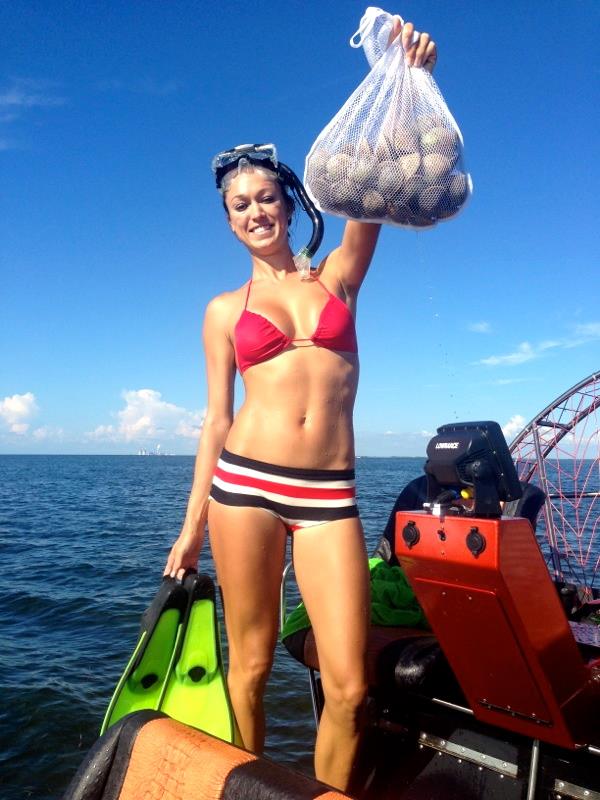 |
| A VIMs Scallop Survey Crew |
Bay scallops, who live in those quintessential “seashells” you see decorating beach houses everywhere, aren’t the first shellfish we associate with the Chesapeake Bay. Just like oysters, however, scallops are Bay natives. They used to flourish behind the barrier islands of Virginia’s Eastern Shore, in underwater grass meadows. They were so plentiful there was a commercial fishery in the early 1900s.
Sadly, the Eastern Shore of Virginia (ESVA) population of bay scallops was entirely wiped out in the 1930s when a nasty slime mold killed their eelgrass beds. That was immediately followed by the legendary Chesapeake-Potomac hurricane in 1933, the same one that created the inlet at Ocean City, Maryland. Eelgrass was believed to be completely gone in that area.
But in 1997, a small patch of eelgrass was discovered in South Bay near Wreck Island. That was promising enough for the underwater grass director at Virginia Institute of Marine Science (VIMS), Robert Orth, to launch a a seagrass restoration project in 2001. His successor, current SAV Program Director Christopher Patrick, continued the restoration work. Today, VIMS calls the return of eelgrass “the most successful seagrass recovery in the world.”
“Unlike other ecosystems that may take decades to restore, underwater grasses can recover relatively quickly in a healthy environment,” says Patrick.
From that one small patch in 1997, the eelgrass beds grew to about 6,000 acres of underwater meadows by 2010. (Today it’s at a thriving 10,000 acres!) With the return of that healthy habitat, VIMS tackled a new challenge: bringing back the bay scallop population.
They started by bringing wild scallops from North Carolina to the VIMS Eastern Shore Laboratory’s shellfish hatchery. In 2012, they began releasing bay scallop larvae, juveniles and adults into the restored grass beds. Since 2013, VIMS and the College of William and Mary’s School of Coastal & Marine Sciences have conducted an annual survey to track the scallop population.
Scallop abundance has been ticking higher each year as restoration efforts kept their momentum going. VIMS was awarded a $2.25 million NOAA grant, announced in May 2023, to plant at least 60 acres of eelgrass and release more than 6 million bay scallops, in partnership with The Nature Conservancy’s Volgenau Virginia Coast Reserve.
This year, the survey on Virginia’s Eastern Shore has reached a milestone. The annual population survey shows the density of bay scallops in southern coastal bays has reached nearly 0.07 scallops per square meter. VIMS says that’s almost enough to support a recreational fishery for harvesting scallops. In comparison, Florida’s minimum for its recreational fishery is set at 0.10 scallops per square meter.
It’s welcome news to the researchers and surveyors who have been essentially counting scallops by hand for the last 11 years. To conduct the survey, scientists, staff and volunteers from William & Mary, VIMS and the Nature Conservancy split about 240 stations throughout the Eastern Shore’s southern coastal bays. At each station, surveyors go right into the shallow water (maximum four feet deep) and use their hands to feel for scallops hiding in the eelgrass. They repeat this process 50 times at each station for a total of 12,000 square meters of seagrass meadows.
It's nice to see good news about the Bay's natural resources. However, scallops are not likely to spread into Maryland's portion of the bay. We have some eelgrass, but it's mostly restricted to the southern most part because eelgrass likes high salinity, and cooler temperatures. Bay Scallops like salinity of 25 and above, and a bare minimum of 14, which would exclude most of Maryland portion of the bay most of the time.
The Wombat has Rule 5 Sunday: Where My Wolfsbane At? on time and under budget at the Other McCain.




No comments:
Post a Comment